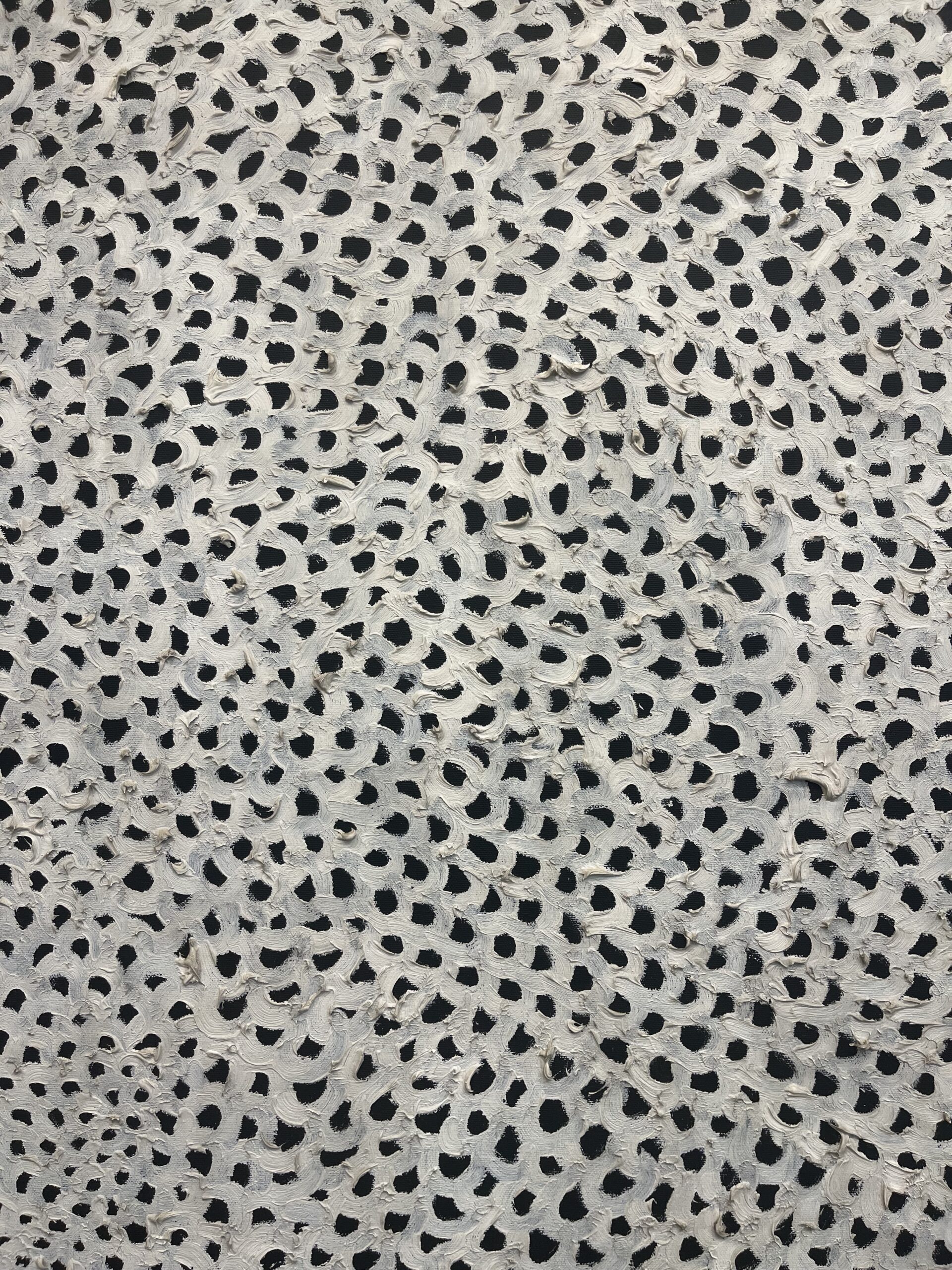
What Is the Meaning of Yayoi Kusama’s Infinity Nets?
Yayoi Kusama is a Japanese contemporary artist known for her sculptures and awe-inspiring installations. She is also a prolific painter through her work titled Infinity Nets.
With their intricately complex but simple and beautiful designs, Yayoi Kusama’s Infinity Nets series captures the viewer’s attention. As the artist’s most significant and acclaimed body of work, Infinity Nets are a testament to Kusama’s groundbreaking achievements and the captivating mystery of conceptual abstraction.
History of the Infinity Nets
Yayoi Kusama arrived in New York City from her native Tokyo, Japan, in 1958. She quickly became a sensation in the art world, as notorious for her performance artwork as she was celebrated for her paintings. The following decade became a prolific period in the artist’s life in which she would paint expansive Infinity Nets for uninterrupted sessions of 40 to 50 hours.
Kusama exhibited her first Infinity Nets paintings in New York in 1959. She employed a single brushstroke’s minimal and repeated gesture to create a web or net of infinite strokes.
These paintings could be seen as a response to the emotionally and semiotically charged action painting of Jackson Pollock and Willem de Kooning, two of her male contemporaries.
Although she was a relative novice to oil painting at the time, Kusama was able to at once firmly grasp and radically redefine the medium in bold defiance of gestural abstraction, which was so dominated by masculine energy.
Kusama sought a different direction, forging dainty increments and a new feminine aesthetic of repetition, replacing all expressive gestures with methodical ones. Kusama’s meticulous and labor-intensive methods pushed painting to its limits, embarking on a new art movement: Minimalism.

Art Turned Therapy
Under the deep complexities is a profoundly personal and fragile core. Diagnosed with obsessional neurosis, Kusama used her art to “self-obliterate” hallucinatory visions through the process of compulsive reproduction of dots and arcs.
Kusama’s intensive artistic practice became her most effective form of self-therapy, a way of escaping her mind by transcribing the infinite repetitions that haunt her.
Art With No Boundaries
Kusma is often regarded as one of the founders of Minimalism, and, in her youth, artists such as Donald Judd and Frank Stella turned towards her for aesthetic guidance. Her influence has also been keenly felt throughout much of Europe. In 1960, Kusma, alongside Mark Rothko, was one of only two American-based artists to be included in a seminal exhibition, Leverkusen, of monochrome paintings in Germany.
Although Kusama was central to New York City’s post-Abstract Expressionist art discourse, she did not subscribe to any particular art movement. She was, and remains, a resilient nonconformist who refuses to be labeled and confined to any established movement or ideology.
Her thought process ultimately served her well, leading Kusama’s work and career to a status of cosmic proportions in the art world and beyond.

Infinity Nets Auction Records
In May of 2022, a white Infinity Nets painting was auctioned at Phillip’s in New York for $8,800,000. The sale of abstract painting was the highest price paid for a living female artist and remains as her auction record for an Infinity Nets painting.
Prior to 2022, the previous record was another white-on-white Infinity Nets painting selling for $6,751,564 at Sotheby’s Hong Kong in April 2019. This one, Interminable Net #4, was completed during Kusama’s New York minimalist period in 1959.
The third highest-selling Kusama Infinity Nets painting was White No. 28, completed in 1960. This is another example of the white-on-white paintings that are a popular choice amongst collectors and buyers. The painting was sold at Christie’s Post-War and Contemporary Art sale in November 2014 for a total of $6,200,000.